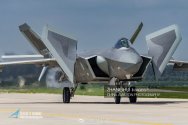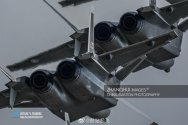You see, I don't see immediately obvious mistakes for a reasonable(for public discussion) degree of approximation. Mass-produced aircraft aren't that complex in their shapes, and they go to great length specifically to eliminate excessive small details.The problem is the bold texts. You see, scientific research start by data gathering and sampling from the real thing. Less than that is just imagining, no matter how it seems to be close.
This makes net results certainly better than public statements with an unknown (unverifiable) degree of substance.
For instance, in 1940s US public sources quite widely used 16" armor belt figure for Iowa class - and it even made its way into tactical documents of other navies, despite shipbuilders telling that this number doesn't add up.
Also, given how production works (actual engineering, that is) - shapes are /probably/ close enough, for mass-production equipment. We are discussing a mass-produced plane here, not a stellarator.
For now, I'll reinstate - the best available one which is both transparent and consistent for any comparison is this one.A flawed methodology.
You may add that 'due to a lack of competition', if internet fight is that important. But it's still the first and only one of its kind, and thus is the best just because.
The only alternative is to rely on public data points of absolutely unknown validity, meaning, and relative accuracy. They're unusable and descend discussion into religious debates of
Yet we still need those consistent data points - the whole LO subject is just too important for LO aircraft to just skip, or even leave at LO yes/no level.







